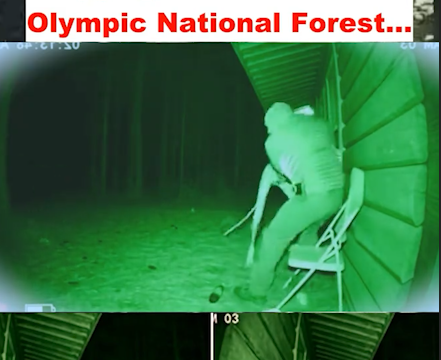Hawaii’s Kilauea volcano, one of the most active volcanoes on the planet, has erupted once again, marking its 31st eruption since December and reminding everyone of the incredible and sometimes unpredictable power of nature. On Friday, the volcano shot lava fountains nearly 100 feet into the air, creating a fiery arc across the summit crater floor at Halemaʻumaʻu.

This new episode began when the north vent started spattering continuously during the morning hours, followed by lava spilling onto the crater floor a few hours later, and then by the afternoon the eruption intensified as lava fountains shot upward in spectacular bursts. Fortunately, the activity is still contained entirely within the summit crater, and no homes or communities are under threat, allowing residents and visitors to witness this stunning display without fear of destruction. For those visiting Hawaii Volcanoes National Park, this latest eruption provides a front-row seat to one of nature’s most dramatic shows, while hundreds of thousands more continue to watch the livestreams broadcast by the U.S.
Geological Survey, which has cameras positioned at three angles to capture the event. Park Service volunteer Janice Wei, who rushes to capture photographs and videos each time the volcano comes alive, described the sound of the fountains as resembling a roaring jet engine or crashing waves. She added that the heat can be felt from over a mile away, making the experience both thrilling and humbling. Kilauea sits on Hawaii Island, the largest in the archipelago, roughly 200 miles south of Honolulu on Oahu. The volcano has a long history of eruptions and is deeply tied to Hawaiian culture, with Native Hawaiian tradition recognizing Halemaʻumaʻu as the sacred home of the volcano goddess Pele.
According to scientists at the Hawaiian Volcano Observatory, magma is currently flowing into a lower chamber beneath Halemaʻumaʻu at a rate of about five cubic yards per second, inflating the chamber like a balloon. This magma is then pushed into an upper chamber and eventually released through cracks to the surface. Because magma contains gases that expand as it rises, the pressure buildup often results in dramatic fountains of lava. In fact, some episodes earlier in this cycle sent fountains more than 1,000 feet into the air. Ken Hon, the observatory’s scientist-in-charge, explained that this eruption has been following the same pathway since December, making each episode part of a single ongoing eruption.
The fountains are capped temporarily by heavier, degassed magma left from earlier episodes until enough fresh magma pushes through, forcing the old magma out in explosive bursts much like popping a shaken bottle of Champagne. This type of episodic fountaining has only been documented four times in the past two centuries, with notable events in 1959, 1969, and the famous 1983 eruption that began with 44 fountain episodes before transitioning into a continuous eruption that lasted 35 years, finally ending in 2018. Predicting how this current eruption will evolve is challenging. It could end if the magma supply dwindles, or it could transition into a long-term event if new vents open at lower elevations, as happened in the 1980s. Scientists use sensors to track earthquakes and tiny shifts in the ground’s angle to estimate when new magma movement is likely, which provides some warning days in advance, though Hon compares the task to ants crawling on an elephant, trying to figure out how it works.
Recent fountains have been somewhat shorter, which University of Hawaii professor Steve Lundblad attributes to the vent widening and reducing the pressure. Still, he notes that the eruptions remain spectacular even if the fountains are not reaching previous heights. For Hawaiians, the eruptions are more than geological events; they are cultural touchstones. Huihui Kanahele-Mossman, executive director of the Edith Kanakaʻole Foundation, explains that while some see lava as destructive, it is also the foundation of Hawaii’s land, solidifying into rock and creating new ground. She visits the crater to observe and connect what she sees with ancient chants and stories of Pele and her sister Hiʻiaka, performing chants and leaving offerings such as awa and fern lei. For her and her hula school, witnessing eruptions described in centuries-old mele, or songs, is both inspiring and motivating, keeping cultural traditions alive. The eruptions have also spurred a surge in tourism.
Hawaii Volcanoes National Park has reported increased visitation every month so far this year, with April seeing nearly 50% more visitors than the same month in 2024. Park spokesperson Jessica Ferracane warns, however, that eruptions can last only 10 to 12 hours, so anyone hoping to witness one should sign up for USGS alerts to avoid disappointment. She also cautions visitors to stay on marked trails and overlooks, as the landscape around the crater can be unstable, with hidden cracks and fragile cliffs posing deadly risks. Volcanic gases, ash, and glass-like particles can also be hazardous, and those visiting at night should bring flashlights to ensure safety.
Kilauea’s latest eruption once again demonstrates the raw power of volcanic forces and their role in shaping Hawaii’s ever-changing landscape. For scientists, it is an opportunity to study one of the world’s most active volcanoes in real time. For Hawaiians, it reinforces cultural traditions tied to Pele and the living land. And for visitors, it is a once-in-a-lifetime chance to stand close to the earth’s fiery heart and witness a natural phenomenon that few places on Earth can rival.





